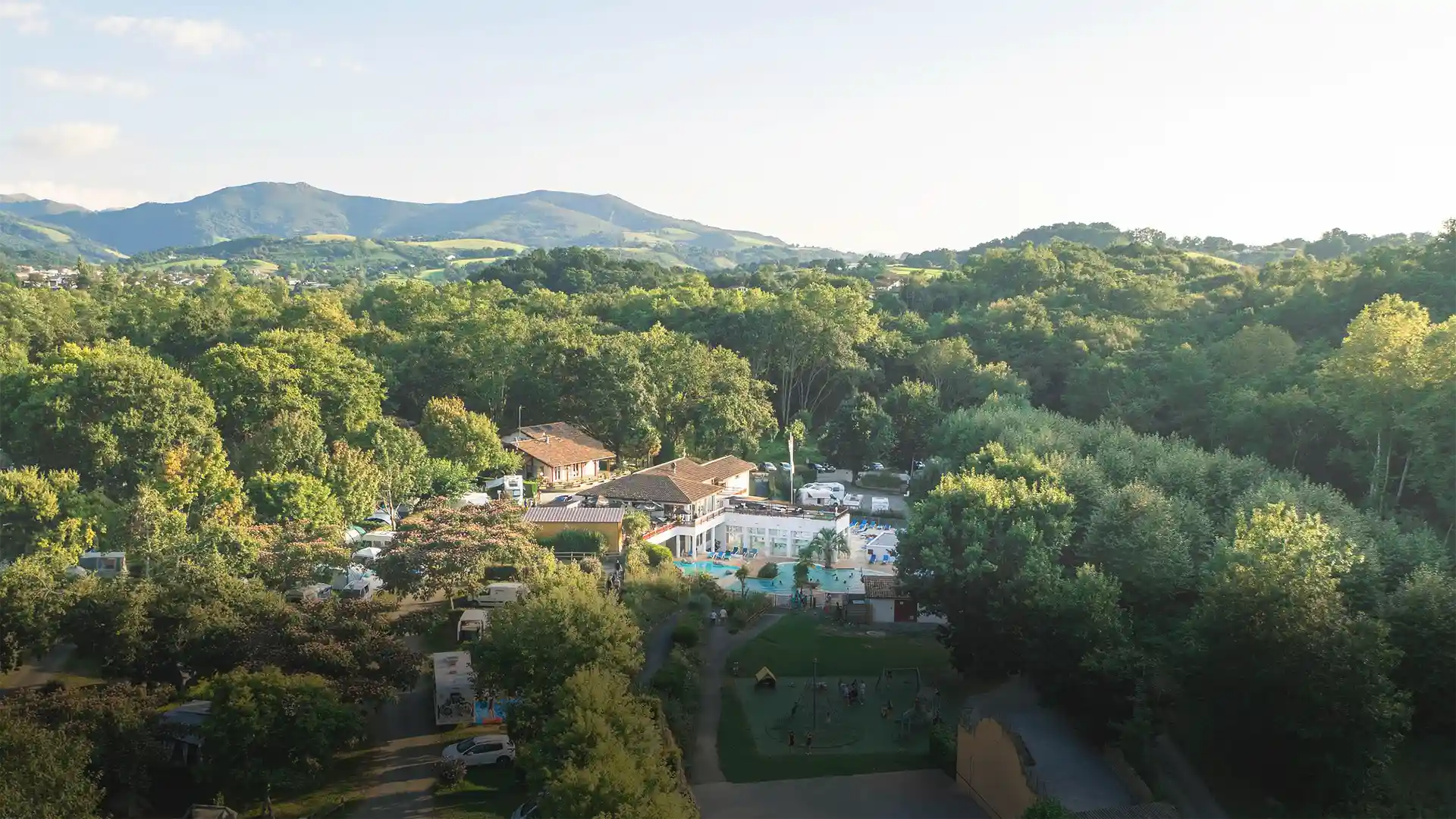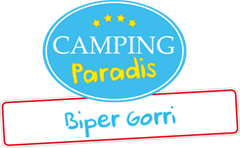All (or almost all) you need to know about Basque pelota
Basque pelota is a veritable institution in the Basque Country. Inherited from Jeu de Paume, this ancient sport is played on the frontons, trinquets and open squares of every village. Here’s everything you need to know to play pelota like a true Basque on your next Biper Gorri camping vacation!

Basque pelota rules
Basque pelota (Euskal pilota, in Basque) is played one-on-one or in teams. The court (the free space) is made up of a striking wall (the fronton) and a playing area, called the cancha, on which the pelota (the ball) bounces.
After the ball has hit the net, the pilotaris (players) must return the ball on the fly or on the first rebound, with balls sent at over 300 km/h. The pelota is playable as long as it hits the wall and bounces off the court.
At the goal, the pelota, hit against the wall by a player, must rebound after a boundary located at a different distance. There are many variations, each with its own rules.
A game with as many specialities as there are provinces in the Basque Country
Founded in 1921, the French Basque Pelota Federation (FFPB) recognizes some 22 different specialities of Basque pelota. Among the most popular are :
- The bare hand: considered the queen of Basque pelota, and also the noblest, it’s the most natural, since no instruments are used. Just like the pioneers, today’s players still hit the ball with the palms of their hands. It’s played two against two.
- Paleta: the most popular pelota game (children, adults, men and women) is also played in the open, 2 against 2, but with a wooden instrument called the palita, a “racket” used to hit the ball.
- The grosse pala: is played under the same conditions as the palita, but with a more powerful instrument and a heavier ball.
- Joko Garbi (or small chistera): played with a wicker glove (the chistera), in a free space, with 3 players per team.
- – Grand Chistéra: played with a more powerful, shorter and shallower glove than the Joko Garbi. Speciality contested in a 3-on-3 free-form layout, on an 80 m long fronton.
- Cesta Punta: the most spectacular discipline, played 2 against 2 with a glove similar to Grand Chistéra, but with a sharper ball and practiced in jaï-alaï, on a 56-meter fronton with a front wall, a left wall and a “rebote” wall at the back.
The pelota player’s outfit
During tournaments, the pelotari wears a particularly neat outfit: white pants and a polo shirt with a collar in the club’s colors. Goggles and helmets must be worn for indoor specialities (with leather pelota), with the exception of hand-to-hand play.
The pelota (ball)
The pelota is the ball used by pelotaris. There are different sizes, weights and compositions of pelota, depending on the type of game played. Its weight varies from 52 to 230 grams. The ball consists of a boxwood core 20 to 36 mm in diameter, lined with several layers of latex, virgin wool yarn and cotton thread. All covered with hand-sewn goatskin.
Leather glove and chistera
Basque pelota is played bare-handed or with different instruments: the leather glove and the chistera. Cowhide or sheepskin leather gloves vary in shape and size according to specialty, player morphology or position in the game (front or back). As for the chistera, which means “throw” in French, it’s a wicker glove of various sizes and depths, similar to the basket that was once used to pick grapes. This hazelnut-framed glove is still handcrafted in Anglet.
Where to play pelota during the vacations?
In summer, almost every town and village in the Basque Country offers introductory sessions in Basque pelota, cesta punta, barehand and pala. Don’t hesitate to contact the clubs in Espelette, Cambo-les-bains, Urrugne, Saint-Jean-de-Luz, Saint-Jean-Pied-de-Port, Bidart or Biarritz. Further information on the French Basque Pelota Federation website: ffpb.net
photo credit: VincentBauza-MonNuage


